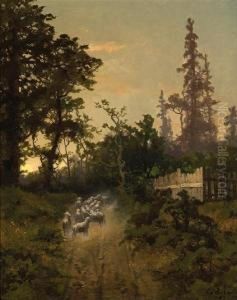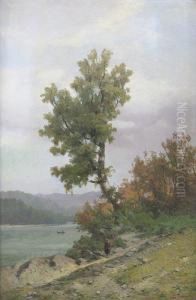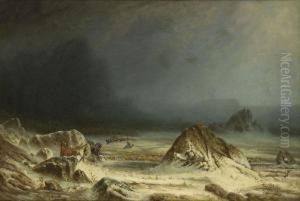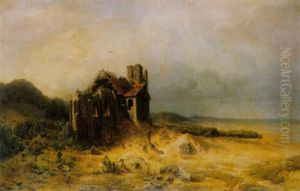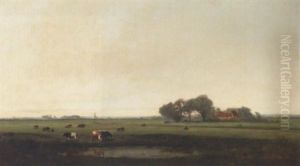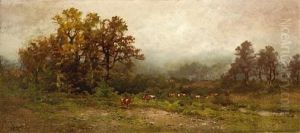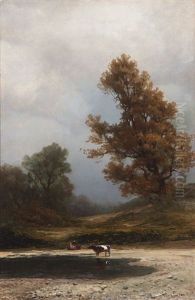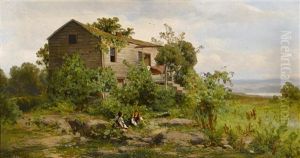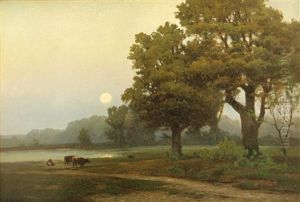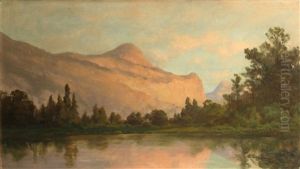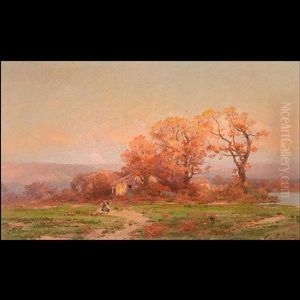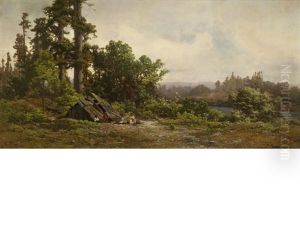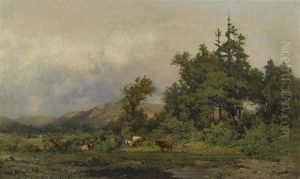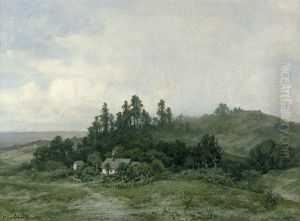Carl Von Perbandt Paintings
Carl von Perbandt was a notable German landscape painter, born in 1832 in Königsberg, Prussia (now Kaliningrad, Russia). His artistic journey began at the Academy of Arts in Königsberg, where he was initially trained. Perbandt's early career was influenced by the Romantic movement, emphasizing the sublime beauty of nature. He was particularly drawn to landscapes, which would become the central theme of his work throughout his life.
After his initial training in Königsberg, Perbandt traveled extensively across Europe, drawing inspiration from various regions, including the rugged landscapes of Norway and the serene Italian countryside. These travels played a crucial role in shaping his artistic vision. By the mid-19th century, he had established himself as a prominent landscape artist, known for his ability to capture the mood and atmosphere of his subjects.
Perbandt's works are characterized by their meticulous detail, vibrant color palette, and the emotional depth they convey. He often depicted scenes at different times of the day, exploring the changing light and its effects on the landscape. This attention to light and shadow not only showcased his technical skill but also infused his paintings with a sense of realism and immediacy.
Throughout his career, Carl von Perbandt remained committed to portraying the natural world. His paintings were well-received by both critics and the public, and he exhibited his works in various prestigious galleries across Europe. Despite his success, Perbandt remained relatively modest and dedicated to his craft, avoiding the limelight and focusing on his work.
Carl von Perbandt passed away in 1911, leaving behind a legacy that has continued to inspire landscape artists. His works are preserved in several museums and private collections, serving as a testament to his contribution to the world of art. Perbandt's dedication to capturing the essence of the natural landscape has cemented his place in the history of 19th-century European art.
